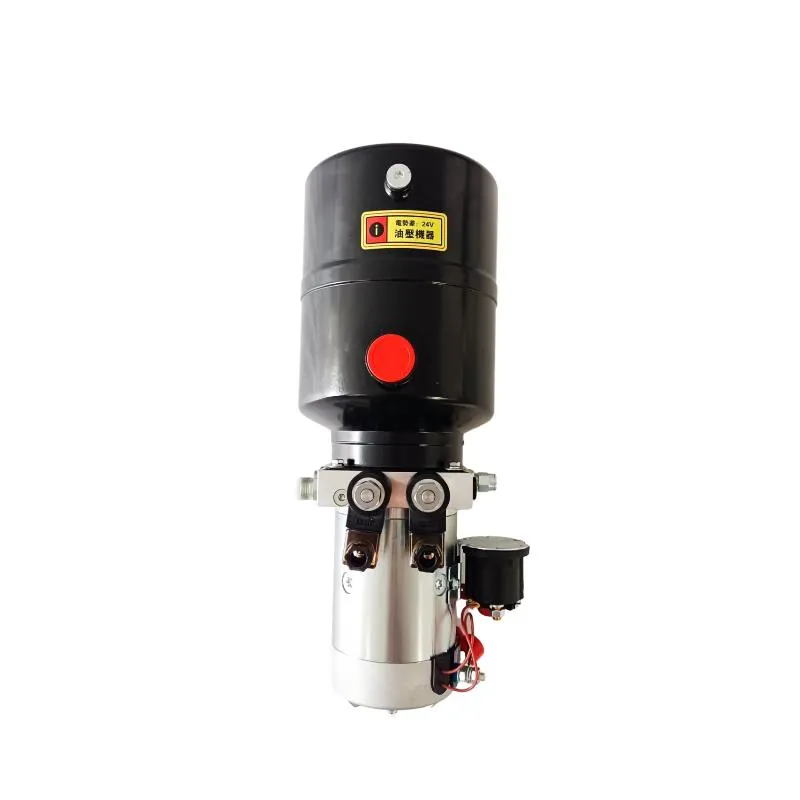Aug . 17, 2024 23:40 Back to list
Hydraulic Cylinder Applications in Manufacturing and Pressing Processes
Hydraulic Cylinders for Press Products
Hydraulic cylinders are crucial components in a variety of industrial applications, especially in the manufacturing sector where they are used for pressing products. These devices convert hydraulic energy into mechanical energy, which allows for the generation of high forces with relatively low input power. This capability makes hydraulic cylinders an invaluable tool in the production of various goods, ranging from automotive parts to consumer products.
At their core, hydraulic cylinders consist of a cylindrical barrel, a piston, and two end caps. Hydraulic fluid is pumped into the cylinder, moving the piston and creating linear motion. The force generated by this motion is dependent on the surface area of the piston and the pressure of the hydraulic fluid. This relationship is described by Pascal’s principle, which states that pressure applied to a confined fluid is transmitted undiminished in all directions. Hence, even a small force applied on the control side of the cylinder can result in the movement of a considerably heavier item on the output side.
Hydraulic Cylinders for Press Products
One of the significant advantages of hydraulic cylinders is their ability to produce consistent and repeatable force. This precision is essential in manufacturing processes where tolerances are critical. For example, in automotive production, the components must meet strict specifications to ensure safety and functionality. Hydraulic presses equipped with advanced control systems can adjust the pressure and speed of operation, allowing for finesse in handling delicate parts or robust processes for thicker materials.
hydraulic cylinder for press products

Moreover, the hydraulic system’s energy efficiency cannot be overlooked. Compared to mechanical systems, hydraulic systems are often more compact and require less energy to perform the same work. With better energy utilization, manufacturers can reduce operational costs and minimize environmental impact. As industries increasingly focus on sustainability, incorporating hydraulic technology can contribute to greener manufacturing practices.
However, hydraulic cylinders also require careful maintenance to ensure optimal performance. Regular inspections for leaks, wear, and proper fluid levels are necessary to prevent failures that could lead to costly downtime. Innovations in sensor technology are helping industries monitor hydraulic systems continuously, detecting anomalies in real-time and allowing for proactive maintenance.
As technology continues to advance, the design and functionality of hydraulic cylinders are evolving as well. Manufacturers are introducing lighter materials and smarter control systems that integrate with Industry 4.0 initiatives. This trend not only increases the efficiency of hydraulic cylinders but also enables greater integration with automated systems and robotics in production lines.
In conclusion, hydraulic cylinders play an integral role in the production of pressed products across various industries. Their ability to generate high levels of force with precision and efficiency makes them indispensable in modern manufacturing. As innovations continue to emerge, the future of hydraulic technology looks promising, ensuring that it will remain a cornerstone of industrial applications for years to come. Whether through the enhancement of existing designs or the development of new solutions, hydraulic cylinders will undoubtedly continue to shape the landscape of manufacturing.
-
1.5 Ton Flipping Oil Cylinder 70/82-40-217-720-Hebei Shenghan Hydraulic Machinery|Precision Hydraulic Cylinder,Custom Hydraulic Solutions
NewsAug.29,2025
-
1.5 Ton Flipping Oil Cylinder 70/82-40-217-720 | Hebei Shenghan Hydraulic Machinery Co., Ltd.
NewsAug.29,2025
-
High-Precision [90/105-50-180-480] Industrial Component | Durable & Reliable
NewsAug.27,2025
-
High-Performance Set of 50/60-45-290 471 | Durable & Reliable Components
NewsAug.26,2025
-
Efficient Pallet Truck Power Units - Reliable Hydraulic Systems
NewsAug.25,2025
-
Premium Set of 50/60-45-290 471 Parts | High Performance
NewsAug.24,2025
